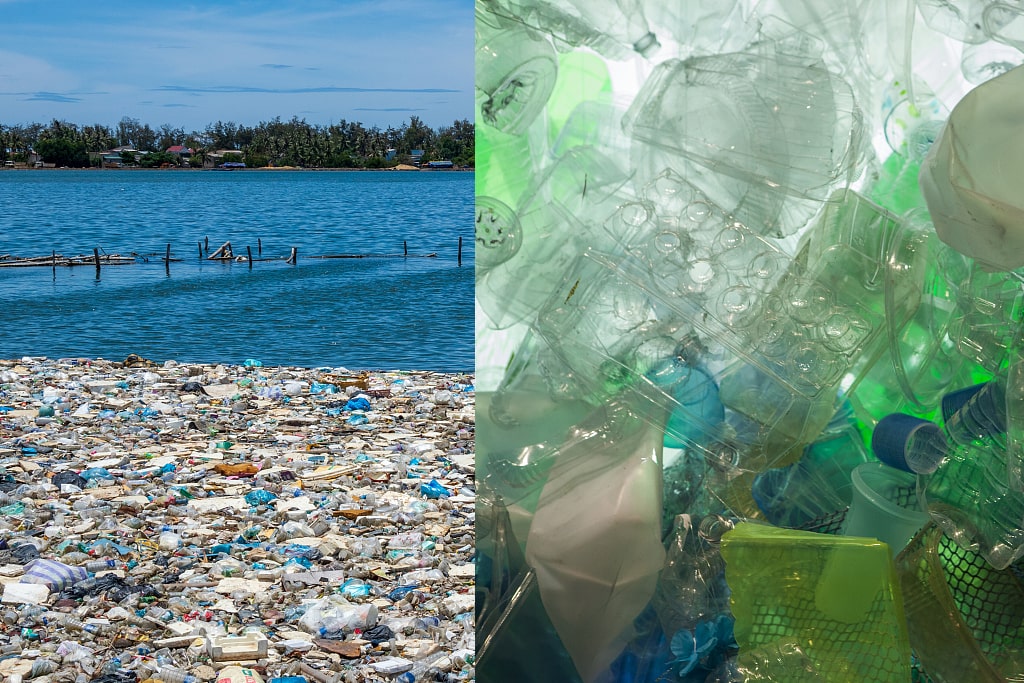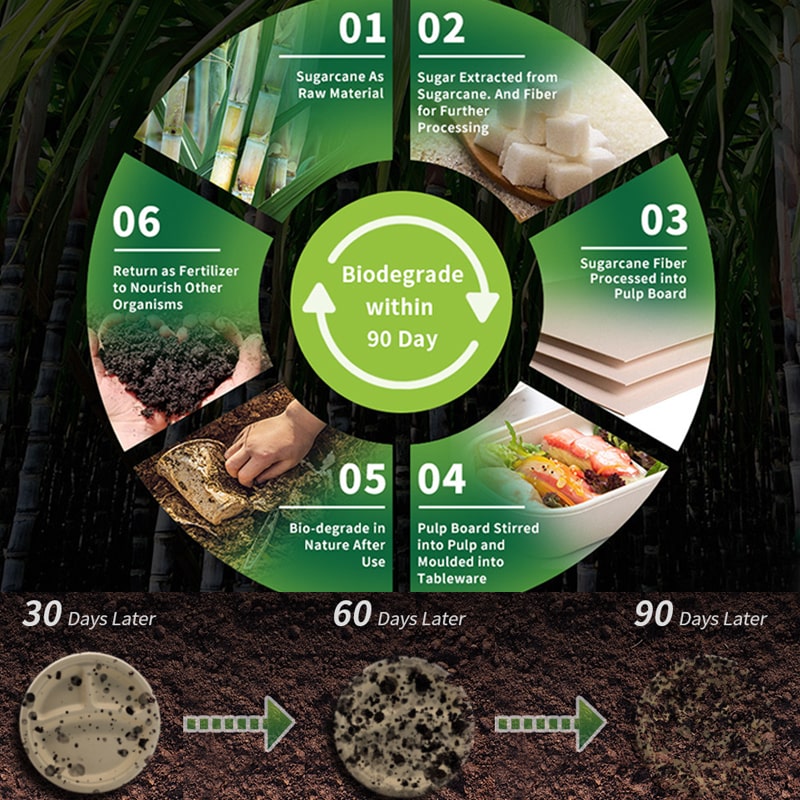Defining the Role of Dinner Plates and their Significance in our Daily Lives
Dinner plates hold a significant place in our lives, as they serve as the foundation for our daily sustenance and social interactions. These essential tableware items have been utilized throughout history to present meals, showcase culinary creations, and bring families and friends together around a shared dining experience.
Beyond their functional purpose, dinner plates also contribute to the aesthetics of table settings, adding elegance and style to any occasion. They are not mere vessels for food but rather an integral part of cultural traditions, personal preferences, and societal norms surrounding eating habits.

Introducing Plastic Dinner Plates and Bagasse Plates
As we delve deeper into the world of dinner plates, two distinct materials stand out: plastic and bagasse. Plastic dinner plates have gained popularity due to their durability, versatility, and affordability.
Manufactured using synthetic polymers derived primarily from petrochemicals such as crude oil or natural gas feedstocks, these plates offer a lightweight option that is resistant to breakage and suitable for various settings such as outdoor picnics or casual gatherings. On the other hand, bagasse plates emerge as an eco-friendly alternative that aligns with growing environmental concerns.
Bagasse is a fibrous byproduct obtained from sugarcane processing after extracting juice for sugar production. These biodegradable sugarcane bagasse plates are manufactured using bagasse pulp - a sustainable material that reduces waste by utilizing agricultural residues that would otherwise be discarded. Both plastic dinner plates and bagasse plates have merits and drawbacks worth exploring further in terms of environmental impact, performance properties, production processes involved, cost considerations, and ultimately their suitability for everyday use in different contexts. By understanding these differences comprehensively, we can make informed choices that align with our values while still enjoying the functionality provided by dinner plates in various aspects of our lives.
Plastic Dinner Plates
An Overview of Plastic as a Material
Plastic is a versatile synthetic material that has become an integral part of our modern lives. It is composed of polymers, which are long chains of repeating molecules. These polymers can be derived from various sources, but most commonly, plastic is made from petroleum or natural gas.
The manufacturing process involves extracting the raw materials and refining them into monomers, which are then polymerized to form the plastic. The resulting material can be molded into various shapes and forms through techniques such as injection molding or extrusion.
Advantages and Disadvantages of Using Plastic Dinner Plates
One of the primary advantages of using plastic dinner plates is their durability. Plastic plates are lightweight yet robust, making them suitable for everyday use and resistant to breakage.
They are also highly versatile in terms of design options and color choices available in the market. Additionally, plastic dinner plates are typically affordable compared to alternatives such as ceramic or glass.
However, it is crucial to consider the disadvantages associated with plastic dinner plates as well. First and foremost is their environmental impact.
Plastic takes hundreds or even thousands of years to decompose naturally since it is non-biodegradable. Consequently, plastic dinner plates contribute significantly to the accumulation of waste in landfills and oceans, posing serious environmental concerns.
The Environmental Impact of Plastic Dinner Plates
The non-biodegradability property exhibited by plastic dinner plates has severe consequences on our environment. Since they do not break down easily over time, discarded plastic dinner plates continue to accumulate in landfills indefinitely.
This not only takes up valuable space but also poses a potential threat for chemical leaching into groundwater sources. Furthermore, when improperly disposed of or littered, these plates often find their way into rivers and eventually make their way into the ocean.
The sheer volume of plastic waste in our oceans is alarming and has severe implications for marine life. Sea creatures, such as turtles, whales, and seabirds, mistake plastic dinner plates for food and suffer from ingestion or entanglement.
Not only does this directly harm these animals, but it also disrupts the delicate balance of ecosystems. Additionally, the harmful effects of plastic extend beyond wildlife.
Plastic dinner plates contain various chemicals that can be released when exposed to heat or acidic substances. These chemicals, including bisphenol A (BPA) and phthalates, have been linked to adverse health effects in humans.
Research suggests that they may interfere with hormone regulation and contribute to conditions such as infertility, developmental disorders in children, and certain types of cancers. In light of these environmental and health concerns associated with plastic dinner plates, alternative options like bagasse plates are gaining traction due to their eco-friendly properties and minimal impact on ecosystems.

Bagasse Plates
A Sustainable Alternative to Plastic Dinner Plates
Bagasse plates, derived from the fibrous residue left after extracting juice from sugarcane stalks, offer a remarkable eco-friendly alternative to plastic dinner plates. Bagasse is a byproduct of the sugarcane production process, making it an abundant and renewable resource that would otherwise go to waste. Its unique composition makes bagasse an ideal material for plate production.
Composed mainly of cellulose fibers, bagasse possesses impressive strength and durability. These natural fibers provide a solid foundation for sturdy and resilient plates that can withstand the rigors of dining while being gentle on the environment.
The Environmental Advantages of Bagasse Plates
One of the most significant advantages of using bagasse square plates over their plastic counterparts lies in their minimal environmental impact. Unlike plastic dinner plates that persist for centuries in landfills and oceans, bagasse plates are fully biodegradable and compostable.
When disposed of correctly, they break down naturally into organic matter without releasing harmful pollutants or contributing to long-lasting waste accumulation. Furthermore, bagasse plates are made from a renewable resource - sugarcane.
This means that as long as there is demand for sugar production, there will be a continuous supply of bagasse available as a raw material for plate manufacturing. The reliance on renewability helps alleviate the strain on natural resources caused by conventional plastic production methods.
Unparalleled Functionality and Performance
Aside from their commendable environmental qualities, biodegradable sugarcane bagasse plates also excel in terms of functionality and performance. Their heat resistance ensures they remain sturdy even when serving hot meals or beverages. Microwave-safe properties allow for quick reheating without compromising structural integrity or releasing harmful toxins into food. 10-inch Bagasse plates have also been engineered to be leak-proof, preventing any unwanted seepage or leakage onto surfaces below them. This feature is especially valuable when serving saucy or liquid-based dishes, providing users with convenience and peace of mind.

Production Process Comparison
Manufacturing Process for Plastic Dinner Plates
Plastic dinner plates are typically manufactured using an injection molding technique that allows for efficient mass production. This process involves injecting molten plastic into a mold cavity under high pressure, where it solidifies and takes the desired shape. While this method enables rapid production rates and precise replication of designs, it relies heavily on energy consumption throughout the entire manufacturing process.
The energy-intensive nature of plastic plate production contributes to its environmental drawbacks, including increased carbon emissions and reliance on fossil fuel resources. These factors further emphasize the need to explore more sustainable alternatives like bagasse plates.
Manufacturing Process for Bagasse Plates
The manufacturing process for bagasse plates begins with the extraction of sugarcane fibers from the stalks. Once separated, these fibers undergo a pulp-making process that involves breaking them down into a fine consistency while removing impurities. This pulp acts as the base material for shaping bagasse plates.
Various molding techniques are employed to create different types of bagasse plates, such as pressing the pulp into molds or using heat and pressure to form them into desired shapes. The versatility of these molding techniques allows for customization in terms of size, design, and functionality.
Notably, compared to plastic plate production processes, manufacturing bagasse plates requires relatively less energy consumption due to the use of natural fibers and less complex machinery. This reduced energy dependency aligns with sustainability goals while ensuring high-quality end products.

Cost Comparison
Evaluating Cost Factors Associated with Plastic Dinner Plates
When evaluating cost factors associated with plastic dinner plates, several aspects come into play. Raw material costs are a significant consideration since plastics derived from petroleum-based sources can fluctuate in price depending on market conditions and availability.
The extraction, refinement, and transportation of these raw materials also contribute to the overall cost of plastic plates. Additionally, the environmental consequences linked to plastic production and waste management incur hidden costs that are often overlooked.
These include pollution mitigation, landfill maintenance, and ocean cleanup efforts. When factoring in these externalities, the actual cost of plastic dinner plates becomes more than just their initial purchase price.
However, it is important to note that bagasse plates may have a slightly higher upfront cost due to their specialized manufacturing process and sourcing from renewable resources. Nevertheless, when considering the long-term benefits they offer in terms of sustainability and reduced environmental impact, bagasse plates prove to be a worthy investment.
In a world seeking sustainable solutions for everyday products like dinner plates, bagasse emerges as an environmentally friendly alternative to plastic. With its renewable source material, minimal environmental impact through biodegradability and compostability, as well as impressive functionality in terms of heat resistance and leak-proof properties, bagasse plates present a compelling case for adoption.
Moreover, when comparing production processes with plastic dinner plates and evaluating cost factors beyond mere purchase price considerations, it becomes apparent that bagasse plates offer not only ecological advantages but also economic viability over time. By embracing innovations like bagasse plates in our daily lives, we take small steps towards building a greener future that harmonizes both practicality and sustainability.








